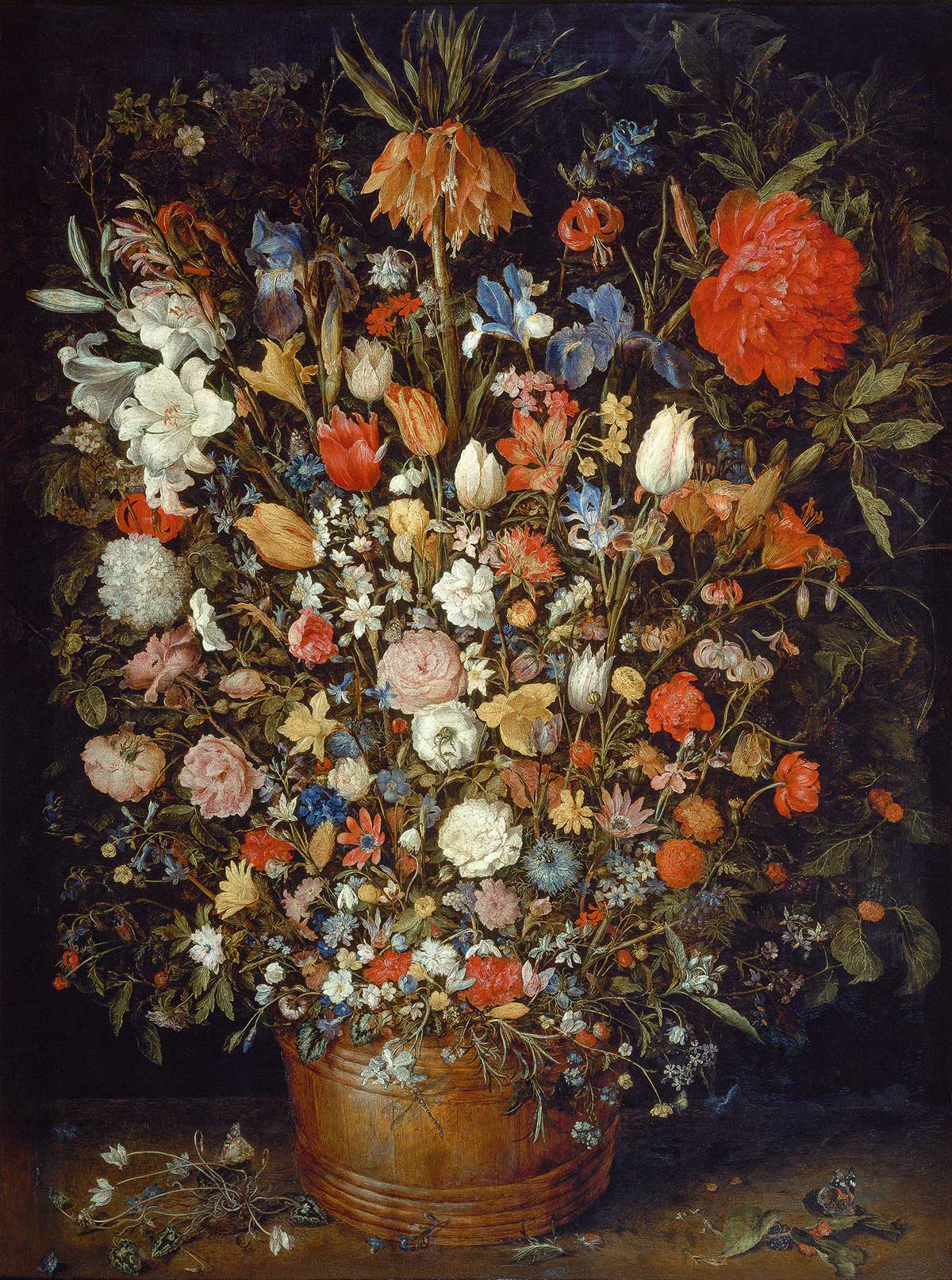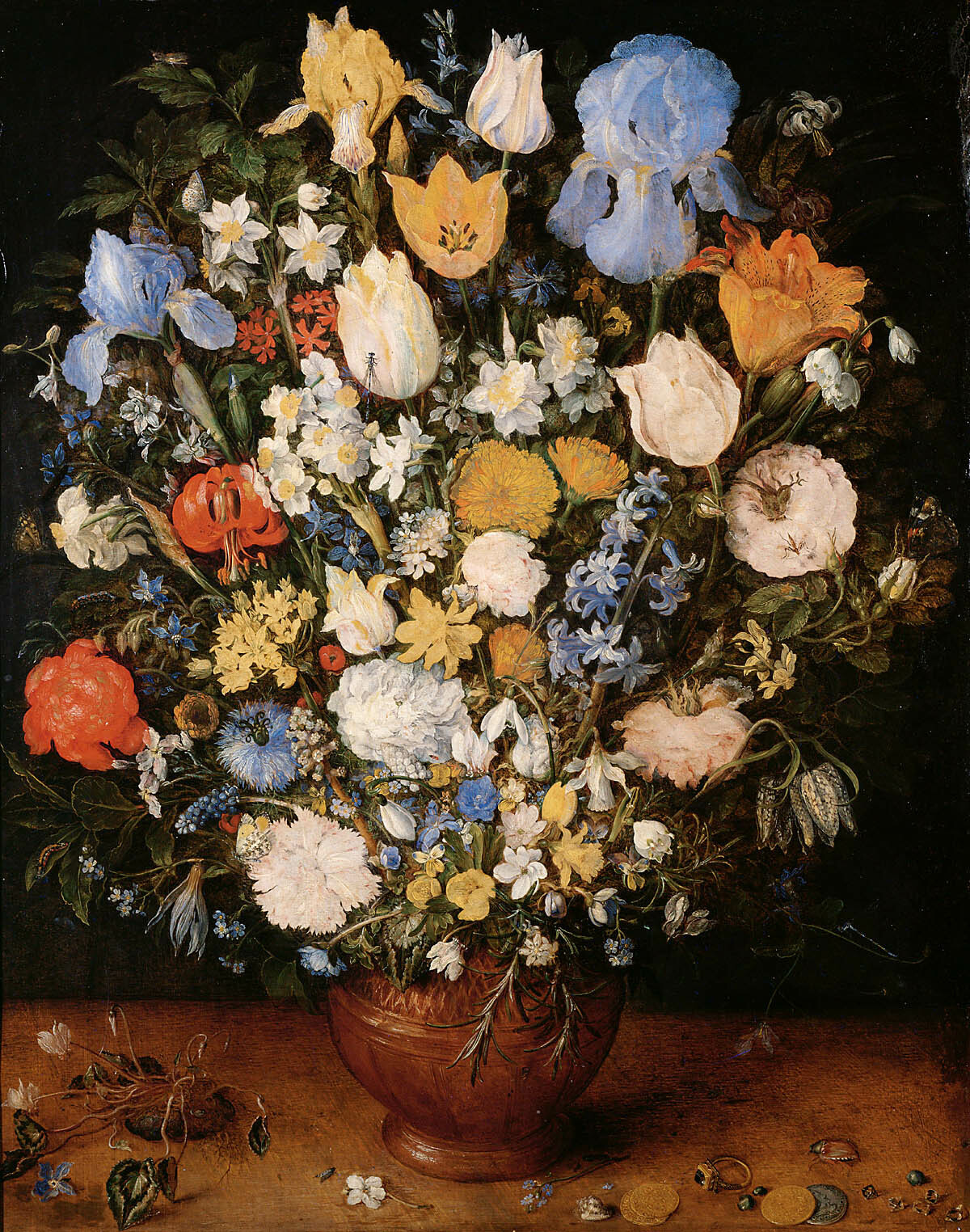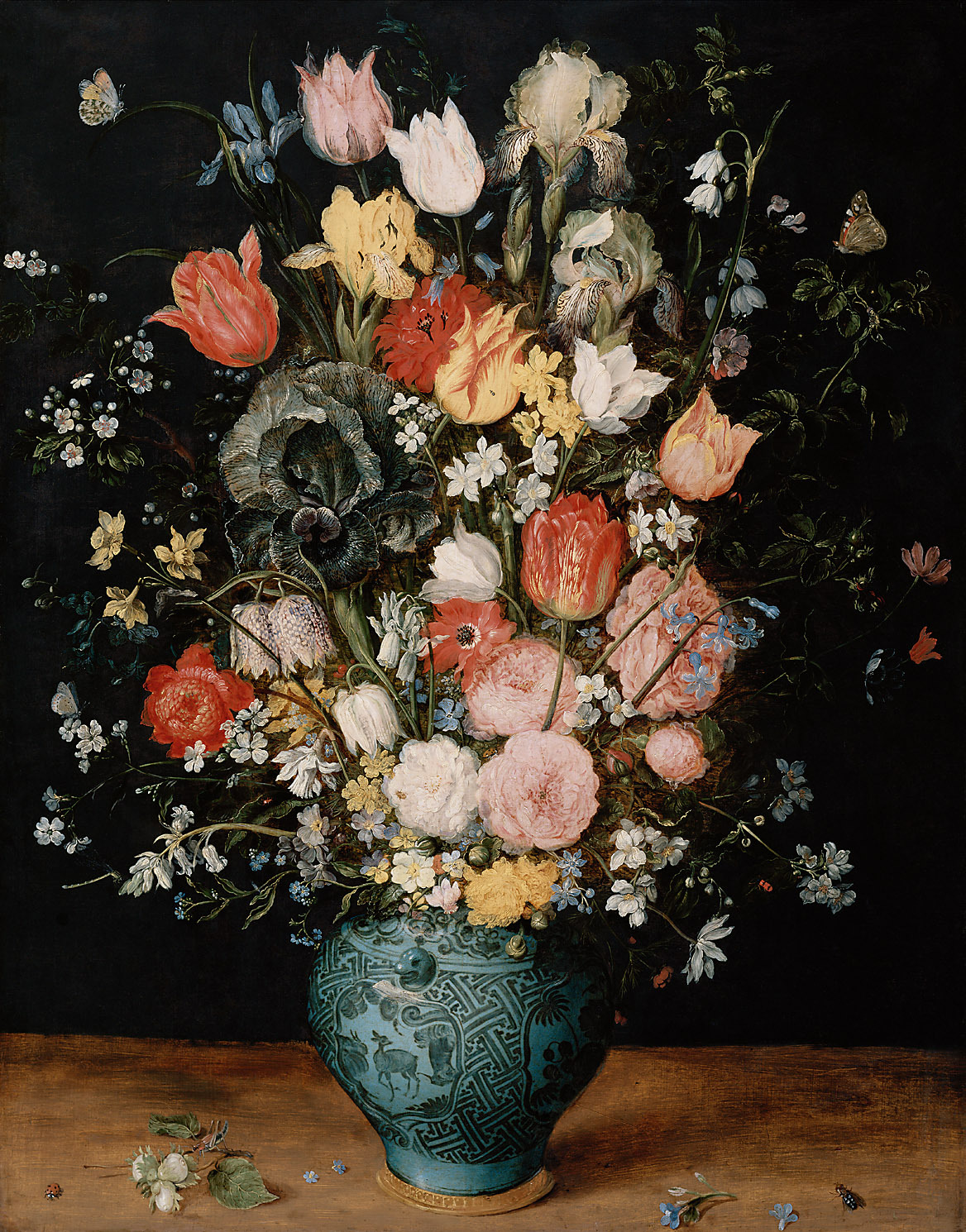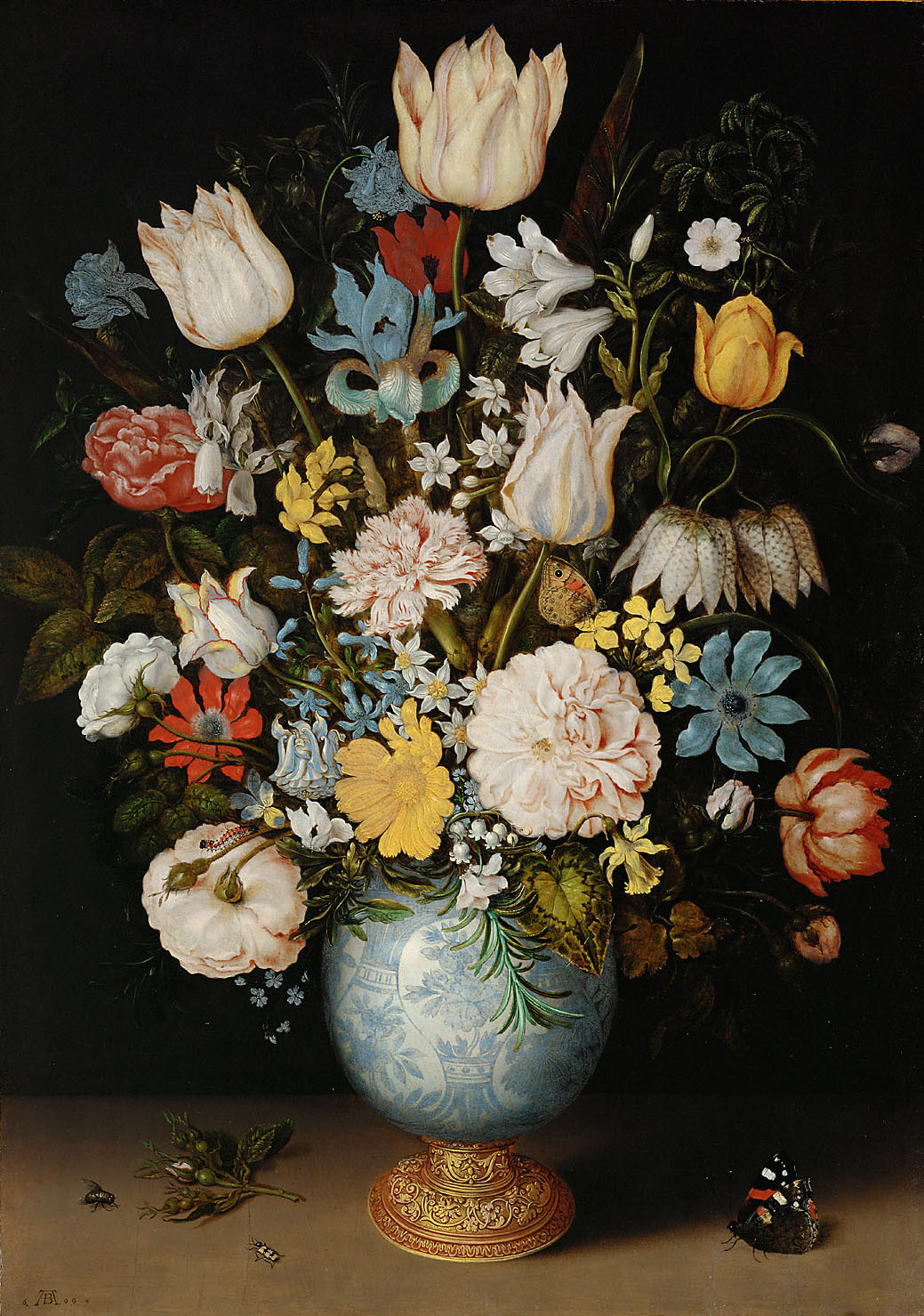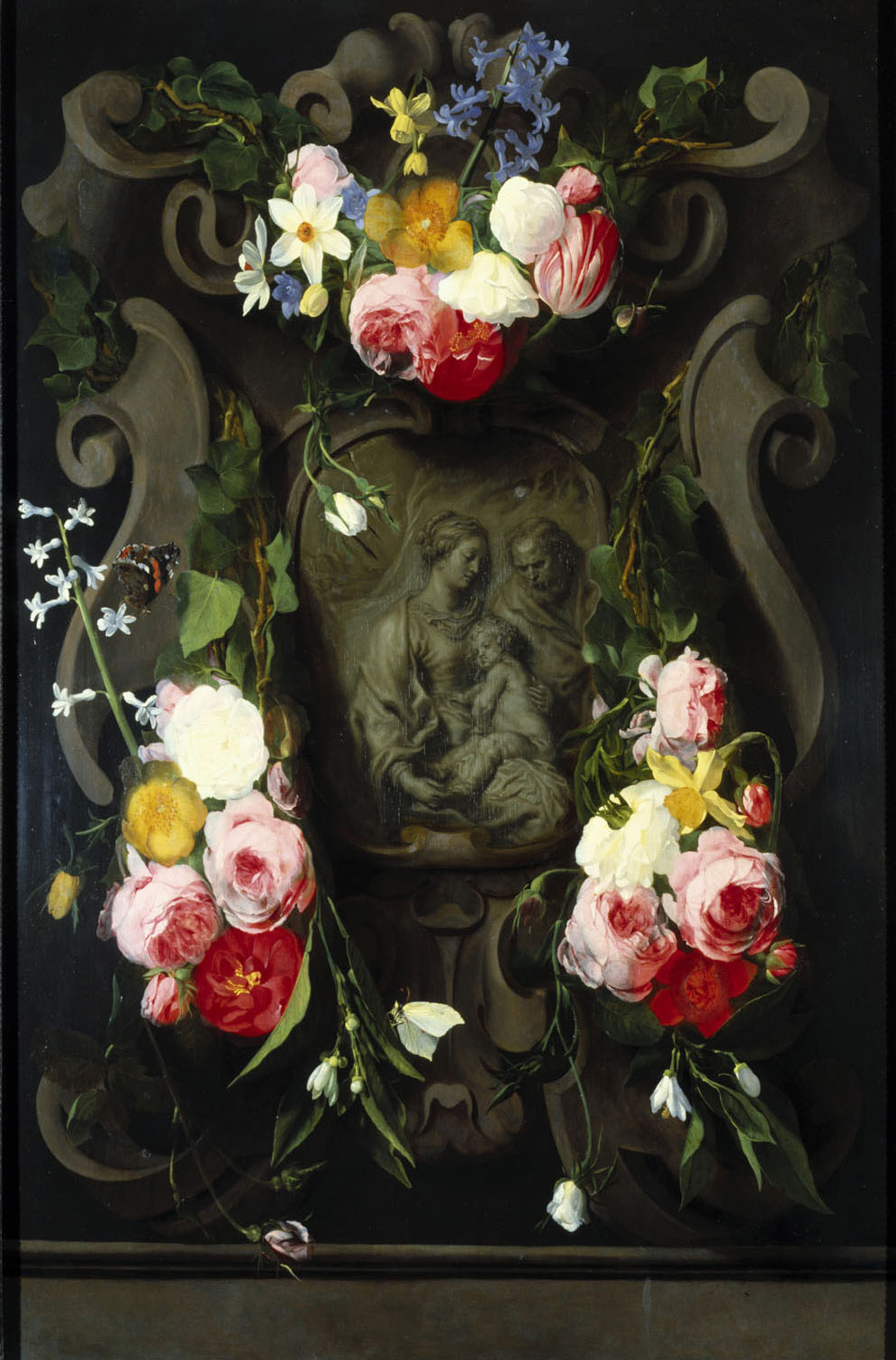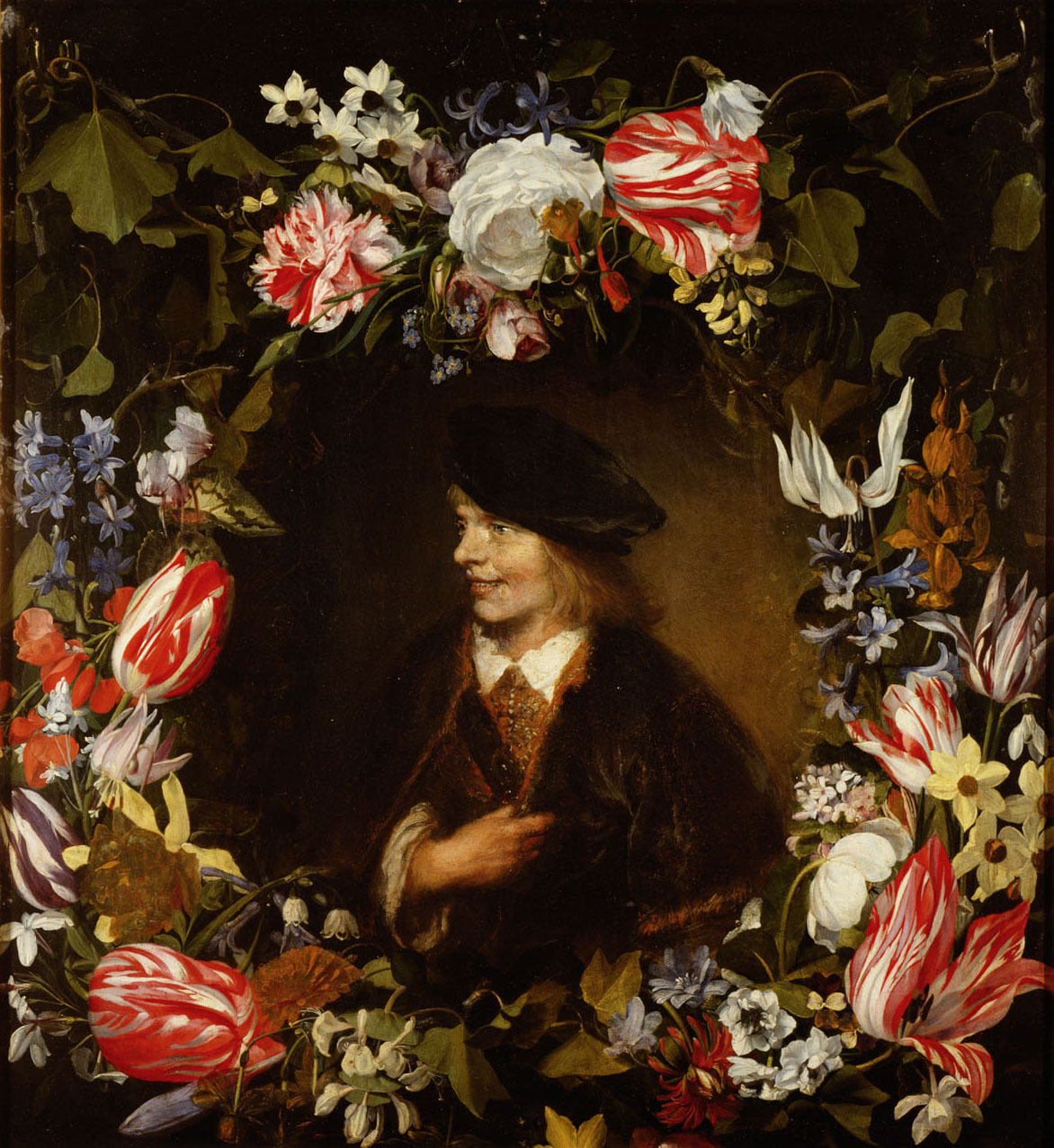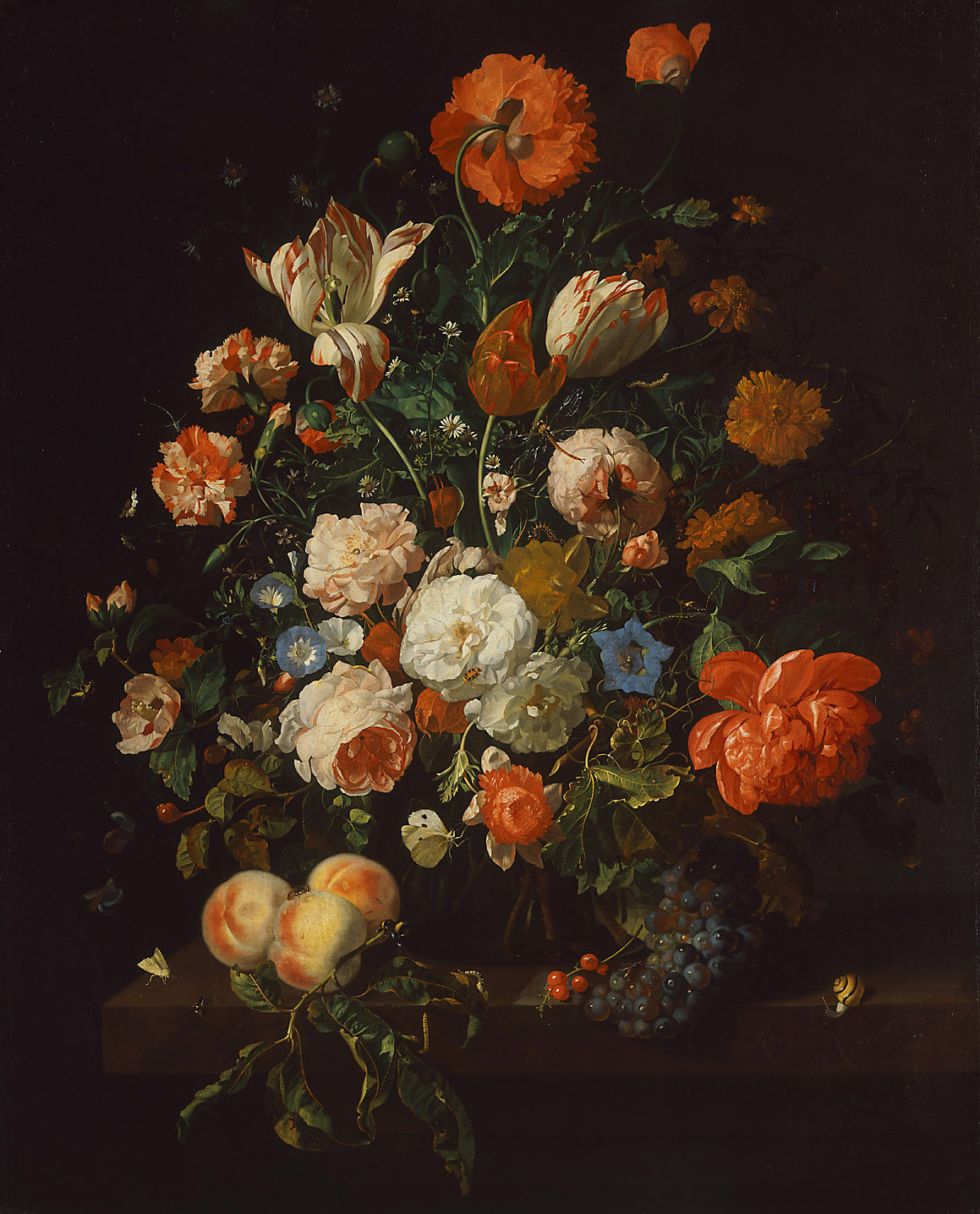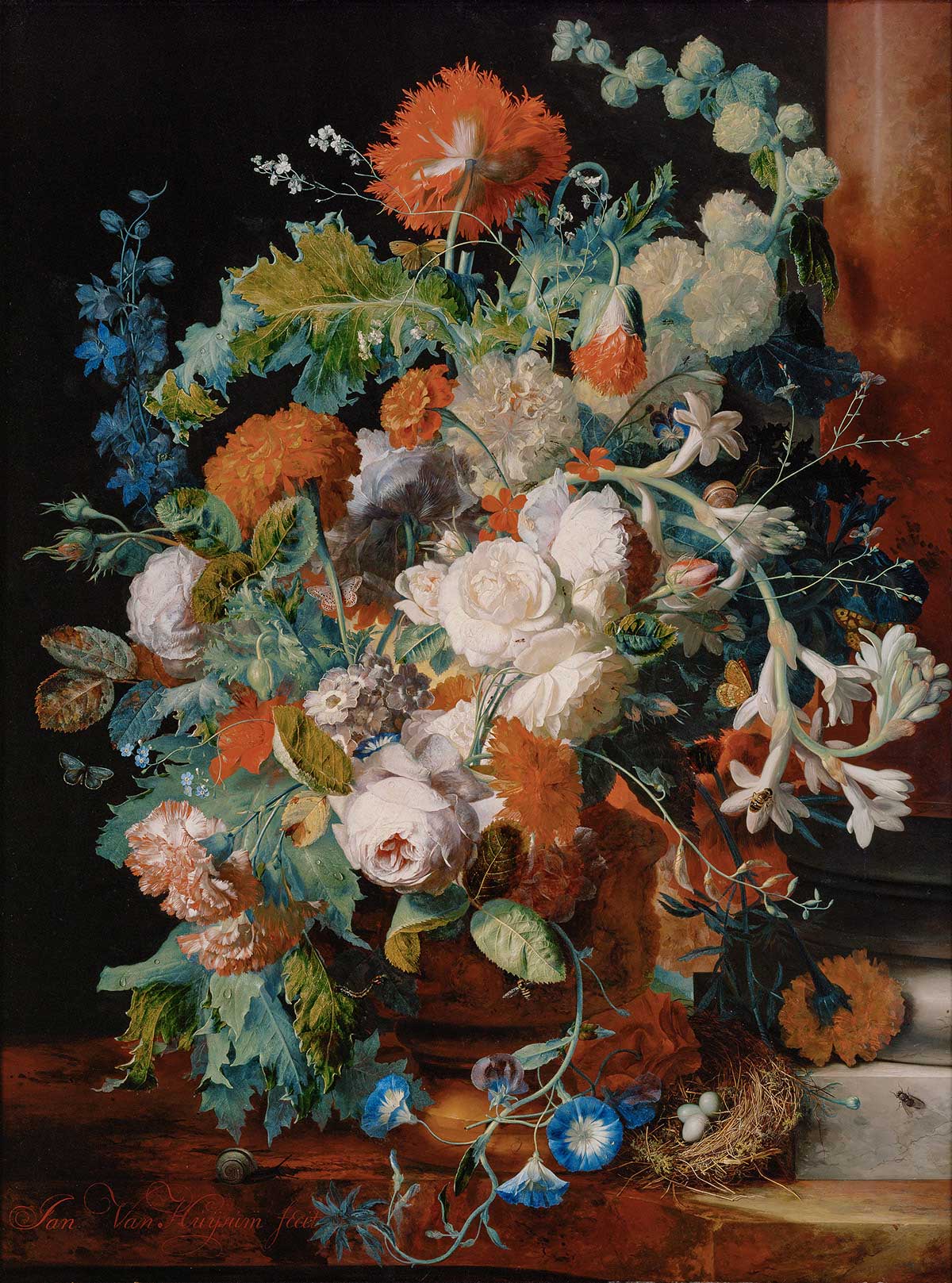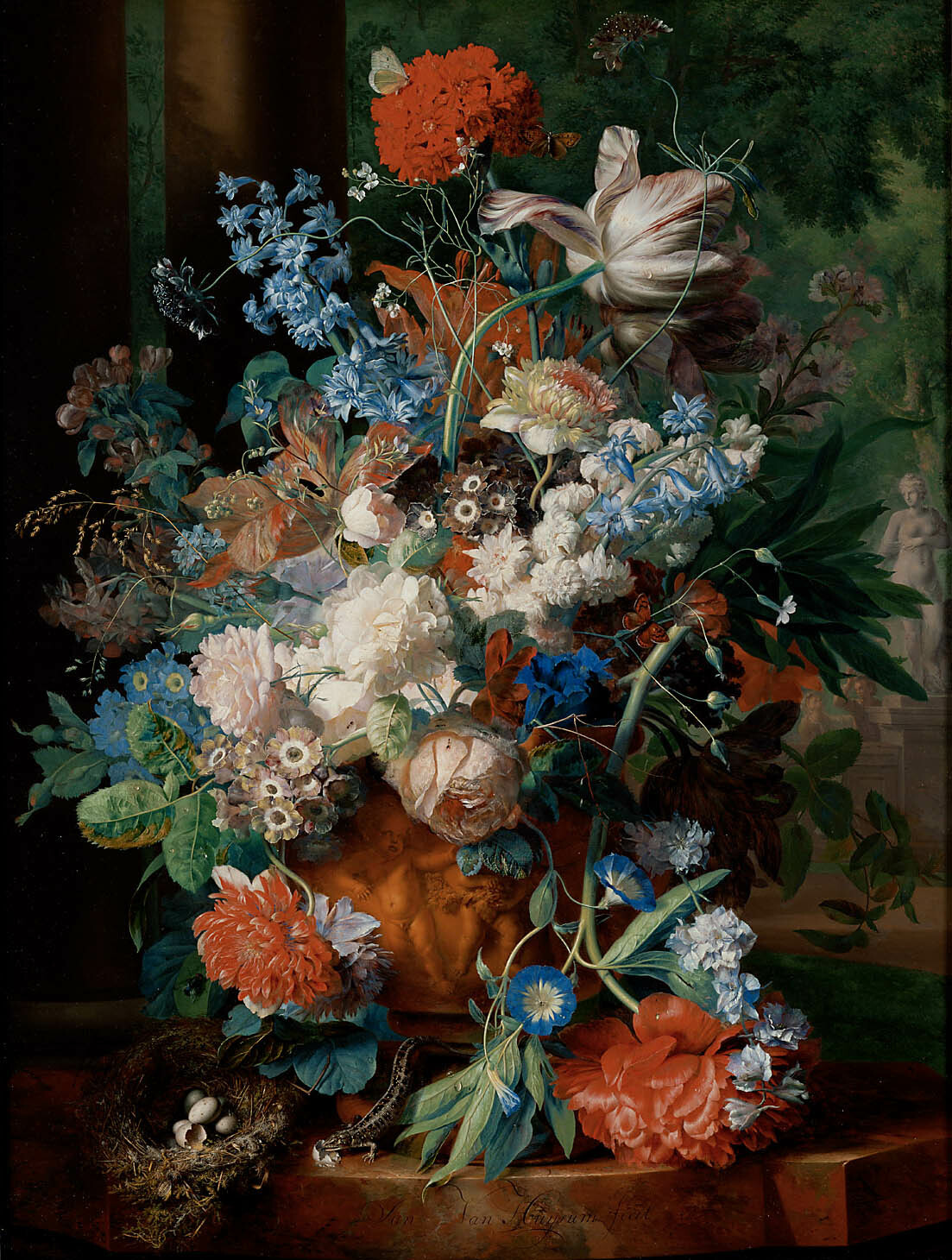Netherlandish Floral Still Life Painting
Floral still life painting, a genre that evolved around the turn of the seventeenth century, was particularly popular and prestigious in the Low Countries. Artists tried to outdo Nature herself by combining and depicting flowers that bloom at different times of the year, their precious blossoms no longer subjected to natural decay. The detailed renderings also reflect the artists’ scientific interest in the natural world. These aesthetic masterpieces were much sought-after objects of contemplation.
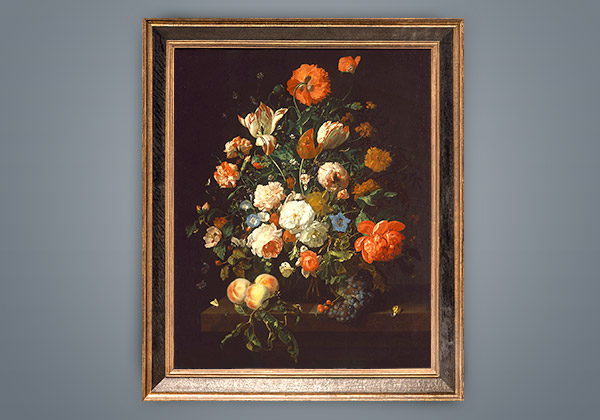
Jan Brueghel the Elder
1568–1625
active in Rome, Milan, Antwerp and Brussels
The Great Bouquet1606/07
Floral still life painting evolved into an autonomous genre at the turn of the seventeenth century, and Jan Brueghel the Elder is regarded as one of its leading representatives. Sixteen such compositions are attributed to him. The Great Bouquet – one of the most famous floral still lifes in European art – does not depict a real bouquet but is an encyclopedic compilation of rare species. This highly-detailed virtuoso depiction of 130 different flowers combines art and a scientific interest in nature.
Jan Brueghel the Elder
1568–1625
active in Rome, Milan, Antwerp and Brussels
Bouquet in a Clay Vasec. 1607
Brueghel’s Bouquet in a Clay Vase is one of the best floral still lifes in European art. Dominated by shades of blue, the composition is carefully calibrated: the artist balanced the overhang on the right by turning the vase slightly to the left. The uprooted cyclamen and the coins, jewellery and rings function as references to the transience of all earthly things. The date 1599 on one of the coins is not the date the composition was completed but a terminus post quem; Brueghel probably painted it around 1607.
Jan Brueghel the Elder
1568–1625
active in Rome, Milan, Antwerp and Brussels
Bouquet in a Blue Vasec. 1608
Small stylistic changes in this composition compared to the Great Bouquet (GG 570) show it was painted a little later. Here, for the first time, stems cut across a large rose half-hidden by another flower. Note also the large Black iris, a rarely depicted variety, among the fiery tulips and showy irises. The blue under-glaze porcelain vase – a popular motif – dates from the reign of the Wanli Emperor.
Ambrosius Bosschaert the Elder
1573–1621
active in Middelburg
Bouquet of Flowers 1609
Ambrosius Bosschaert the Elder is one of the founders of Netherlandish still life painting. Artists relied on preparatory studies to compose such bouquets of flowers that bloom at different times of the year. The blue under-glaze porcelain vase dates from the reign of the Wanli Emperor, examples of which were first brought to Europe by the Portuguese. Its gilt silver foot is the work of a craftsman active in Holland or Antwerp in the early seventeenth century.
Daniel Seghers
1590–1661
active in Antwerp
Floral Wreath with the Holy Familyc. 1650
Religious floral still life painting combines sacred motifs – here, for example, in the illusionistic stone relief – with decorative garlands. Like many such compositions, it too was a collaboration by two artists. The grisaille cartouche framed by highly-detailed, brilliantly-painted bouquets is by the Flemish flower-specialist Daniel Seghers. He belonged to the Order of Jesuits in Antwerp, whose members practiced the contemplation of Nature, her beauty and transience as a devotional exercise.
Jan Lievens
1607–1674
active in Leiden, Amsterdam, London and Antwerp
Jan van den Hecke
1620–1684
active in Antwerp, Rome and Brussels
Portrait of a Young Man in a Garlandc. 1642/44
The baroque painters, Jan Lievens and Jan van den Hecke, were both active in Antwerp in the early 1640s, and they collaborated on this composition. The bust portrait of a smiling young man sporting a beret and a sash is the work of the Dutchman Lievens, the opulent framing garland is by van den Hecke, a native of Flanders. The painting was first listed in 1659 in the inventory of the collection of Archduke Leopold William, where it was (wrongly) identified as a portrait of the young Rembrandt.
Rachel Ruysch
1664–1750
active in Amsterdam and The Hague
A Vase of Flowers 1706
The liberal milieu prevalent in the Low Countries made it easier for female artists to establish themselves, although they were mainly restricted to (floral) still life painting. In 1701, Rachel Ruysch, a very successful specialist in paintings of flowers, joined The Hague Guild of Saint Luke together with her husband, the portrait painter Juriaen Pool. The majority of her international patrons were members of the aristocracy. The composition with its dramatically-lit asymmetrical flower arrangement documents the evolution of the genre in the eighteenth century.
Jan van Huysum
1682–1749
active in Amsterdam
Vase of Flowers next to a Columnc. 1718/20
Jan van Huysum is an eighteenth-century representative of the long tradition of Netherlandish floral still life painting. Pairs juxtaposing a still life of fruit with one depicting flowers became popular in the seventeenth century. Van Huysum too did not compose these two floral still lifes as a pair but painted them as autonomous works around 1720. The opulent floral still life is set off by a dark background typical of early works by the master from Amsterdam.
Jan van Huysum
1682–1749
active in Amsterdam
Vase of Flowers on a Ledge in a Park Setting c. 1720/22
Behind this brilliantly-painted bouquet of flowers in a terracotta vase decorated with putti we see a vista of a park featuring a female statue. The resulting brighter background is characteristic of the artist’s style after 1720. Note the masterly handling of this artful compilation of flowers with their carefully painted details. Huysum’s preferred support was a mahogany panel, whose perfectly smooth surface enhanced his painterly approach.




